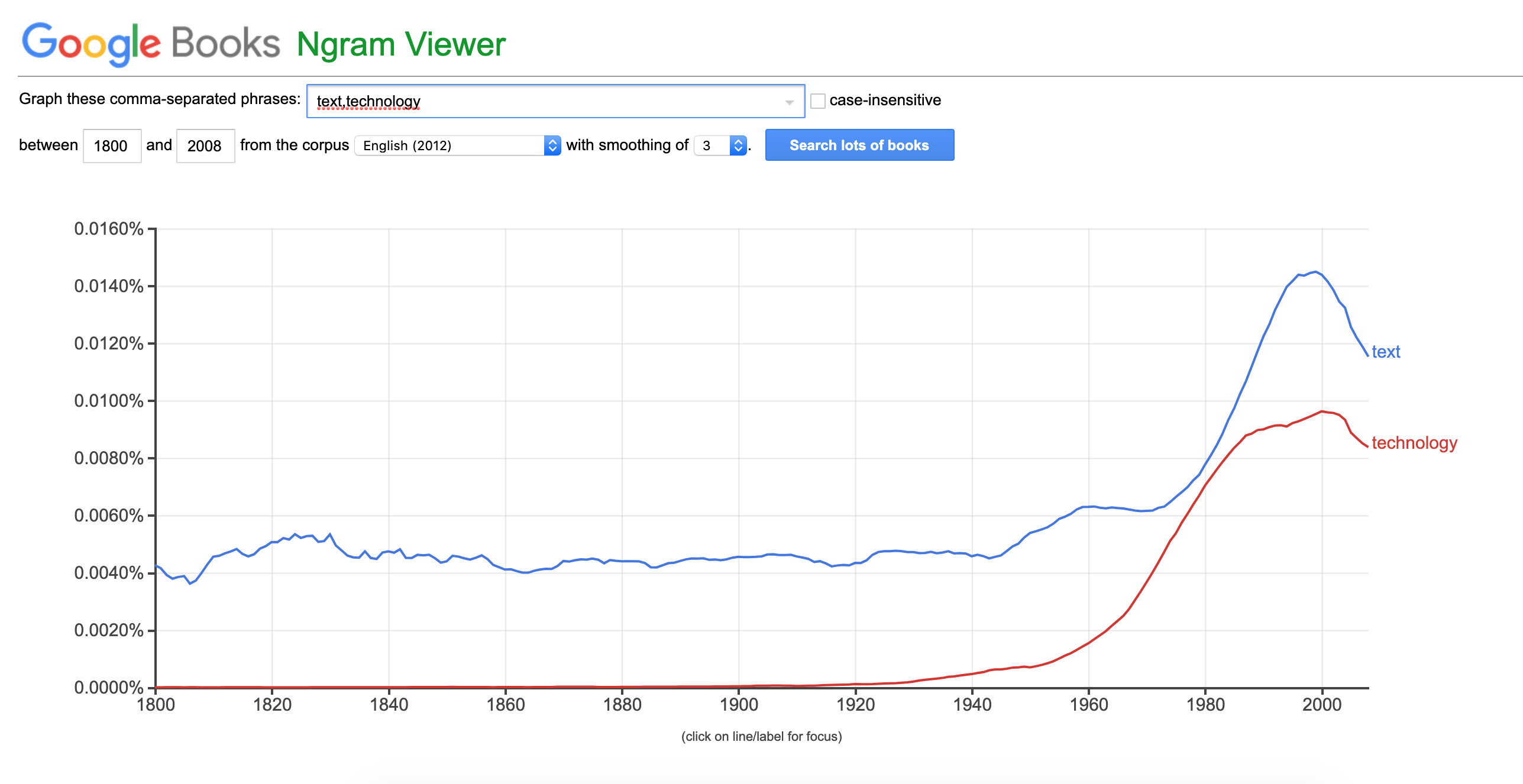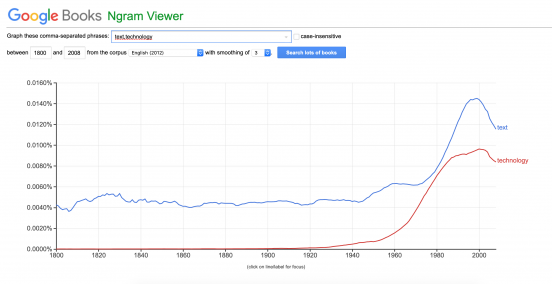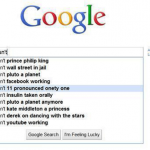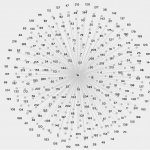Text and technology are two interesting words to consider. They can be defined either narrowly or broadly and have a number of different applications. Text has the standard definition of being letters and words, usually on a page or document for people to read. However, it can broadly be extended to anything that carries information that can be read: this includes things like paintings, videos, clothing, quilts, interior design, and all other aspects of human culture and society. Technology has the standard definition of being digital devices that have emerged over the last 100 years within the contemporary computational age. However, technology is also a term that can be used for any invention or device created by humans to fulfil a particular function: such as stone arrowheads, bronze pouring techniques, or ballpoint pens. Ursela Franklin’s (1989) CBC Masey Lecture on the Real World of Technology is a really wonderful listen in order to explore this broader dimension.
Using Google Ngram produces an interesting visualisation into the occurrence and use of these two terms in books, articles, documents, and records over the last 200 years. You can see from the diagram below that the term text has always been in use, but began to climb in use from the 1940s, with a steep increase beginning in the 1970s. Technology, in contrast, was not used at all until just before the 1920’s and then rapidly increase in use. Interestingly, both terms have been in usage decline since just before 2000. If setting the Ngram to track up to 2010, 2015, or 2020, the decrease in use continues steadily downwards.

Text being used continually makes sense, as it is a form of communication that has long been part of modern society, and would have been integrated into various books and documents throughout. The use of the term technology from the 1920s is most likely a post war phenomenon, where the invention of silent films and radios began being used commercially in households and began being woven more readily into the fabric of society. Such shifts in word existence and use continue to be linked with the development and invention of new technologies. Neologisms are developed to match new things we never had before, words are imported between languages if certain inventions are tied to a particular society/location, and semantic change occurs when old words are used in new ways.
Semantic change in the English language prompted by the internet and social networking was discussed well by Jonathan Berkowitz in his excerpt called Internet Age Words on the CBC show North by Northwest. Other words I can think of that have shifted with the popularization of the internet include troll and surf. A lecturer of mine from my undergraduate at UCT wrote a great paper in which she gives the examples of banner, to compress, hack, geek and gopher (Deumert, 2008). In the article Semantic Change, the Internet: and Text Messaging she also looks at how the morpheme ‘e’ is now used as a prefix to indicate computer/internet related shifts in words, such as ‘e-book’. Below is a further short library of videos created by some of my favourite YouTube edutainment channels that explore the relationship between the terms and existences of text and technology.
Text and Technology Video Library
References
Deumert, A. (2006). Semantic change, the internet: And text messaging. (Second ed., pp. 121-124) Elsevier Ltd. doi:10.1016/B0-08-044854-2/01017-8
Franklin, U. M. (Presenter). (1989) The Real World of Technology – Part 1 [online lecture recording]. Retrieved from https://www.cbc.ca/player/play/14195315





